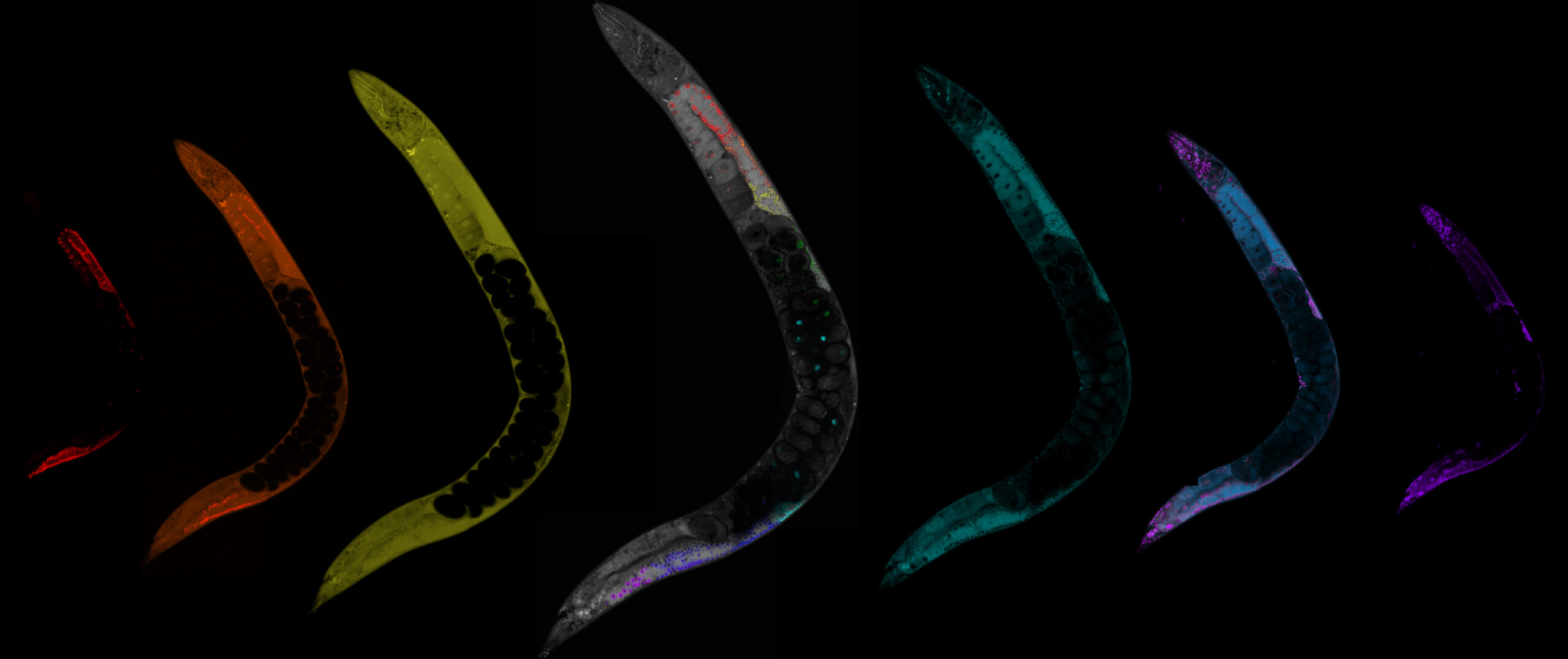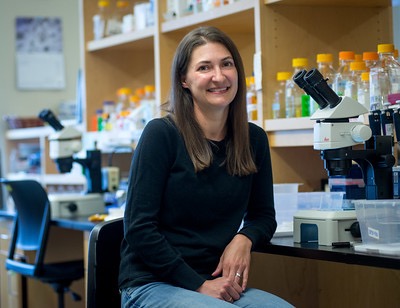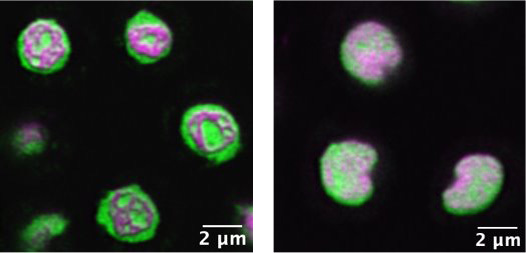
Tiny Worlds, Big Science: Biotech Tools for Maine
Photo Credit: Hannah Somers, MDIBL
Sometimes a new tool can spur a scientist to unexpected discoveries.
At the MDI Biological Laboratory in Bar Harbor, Maine native Emily Spaulding, Ph. D., is using an advanced “super-resolution” microscope to peer deeply into the cells of a tiny, transparent roundworm called C. elegans. What she’s found there opens a new window on diseases of the human brain.
“We can see cellular substructures and processes associated with neurodegenerative diseases such as Alzheimer’s and ALS,” Spaulding says. “Very little of this kind of work has been done in a living animal, almost none.”

“Very little of this kind of work has been done in a living animal, almost none.”
Emily Spaulding, Ph. D.
A Rockland High School graduate who earned her doctorate at the University of Maine, Spaulding is now an MDIBL fellow – and a 2022 winner of the National Institutes of Health’s “Outstanding Scholars in Neuroscience” award.
She and colleagues just published their findings – including the discovery of a new gene protein – in Nature Communications.
Spaulding’s work demonstrates that the roundworms can provide a powerful new model for understanding how subcellular dynamics influence brain dysfunction in humans.
That’s just one of the biotech advances underway at the Laboratory, where faculty are also assembling another next-gen microscope, called a mesoSPIM.
Its “light-sheet” technology will open an unprecedented 3D view into the cell, while allowing entire organs and organisms to be imaged.

Photos: Emily Spaulding, Ph.D.
“For those purposes it’s a far superior technology compared to other microscopy,” says Prayag Murawala, Ph.D. a faculty member from the west coast of India who studies the axolotl, a remarkable salamander which can regrow limbs and organs.
“What is the 3D architecture of the nervous system? What is the 3D architecture of a blood vessel?” Murawala asks. “mesoSPIM will be a game-changer.”
And not just for MDIBL’s faculty.
The Laboratory shares its technology and expertise with outside scientists and a network of 14 college, university and institute campuses, from Biddeford to Fort Kent, that are collaborating to produce technically skilled graduates and a workforce for Maine’s growing life sciences sector.
You can invest in Maine’s science future and help to improve human health here